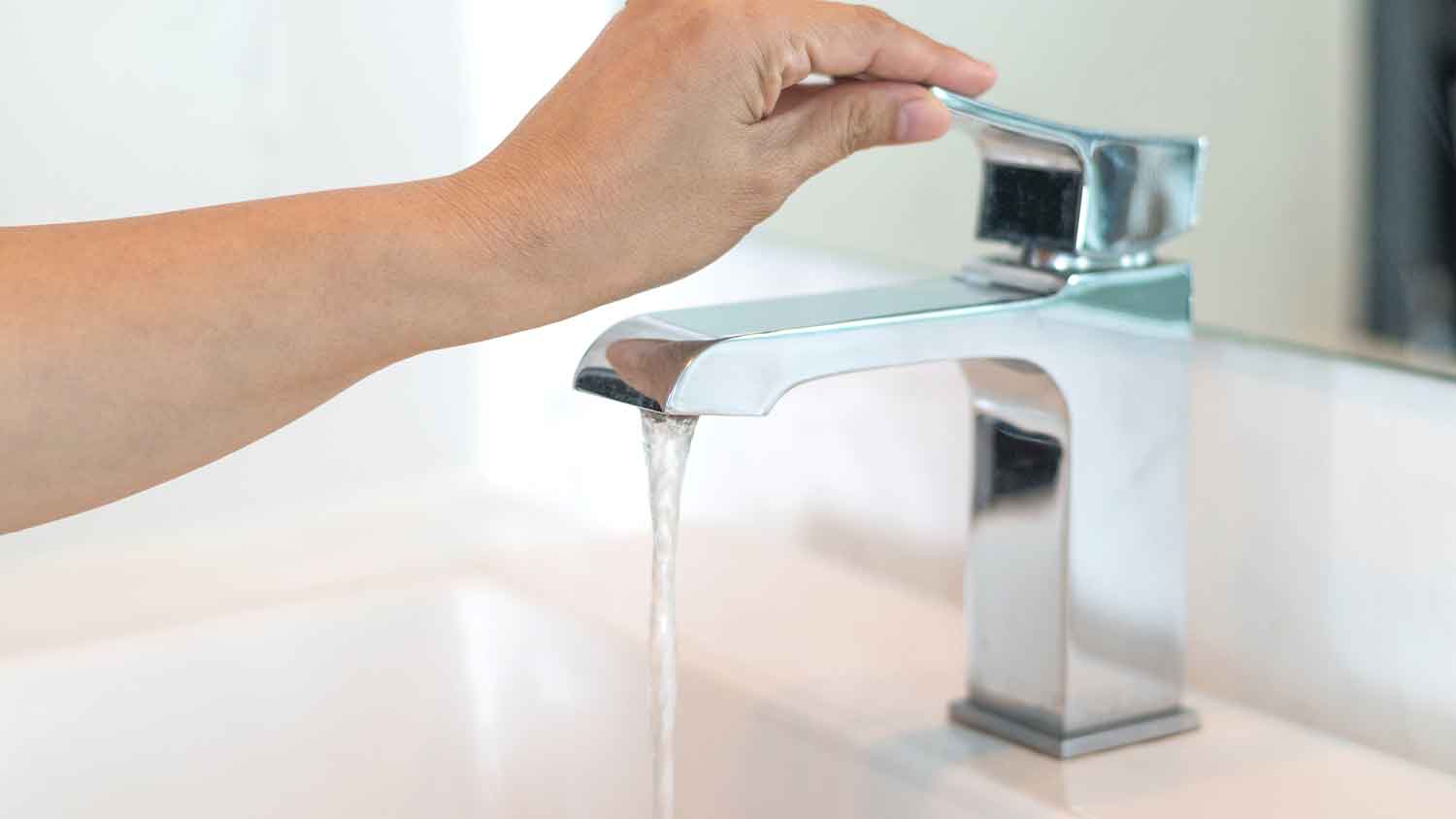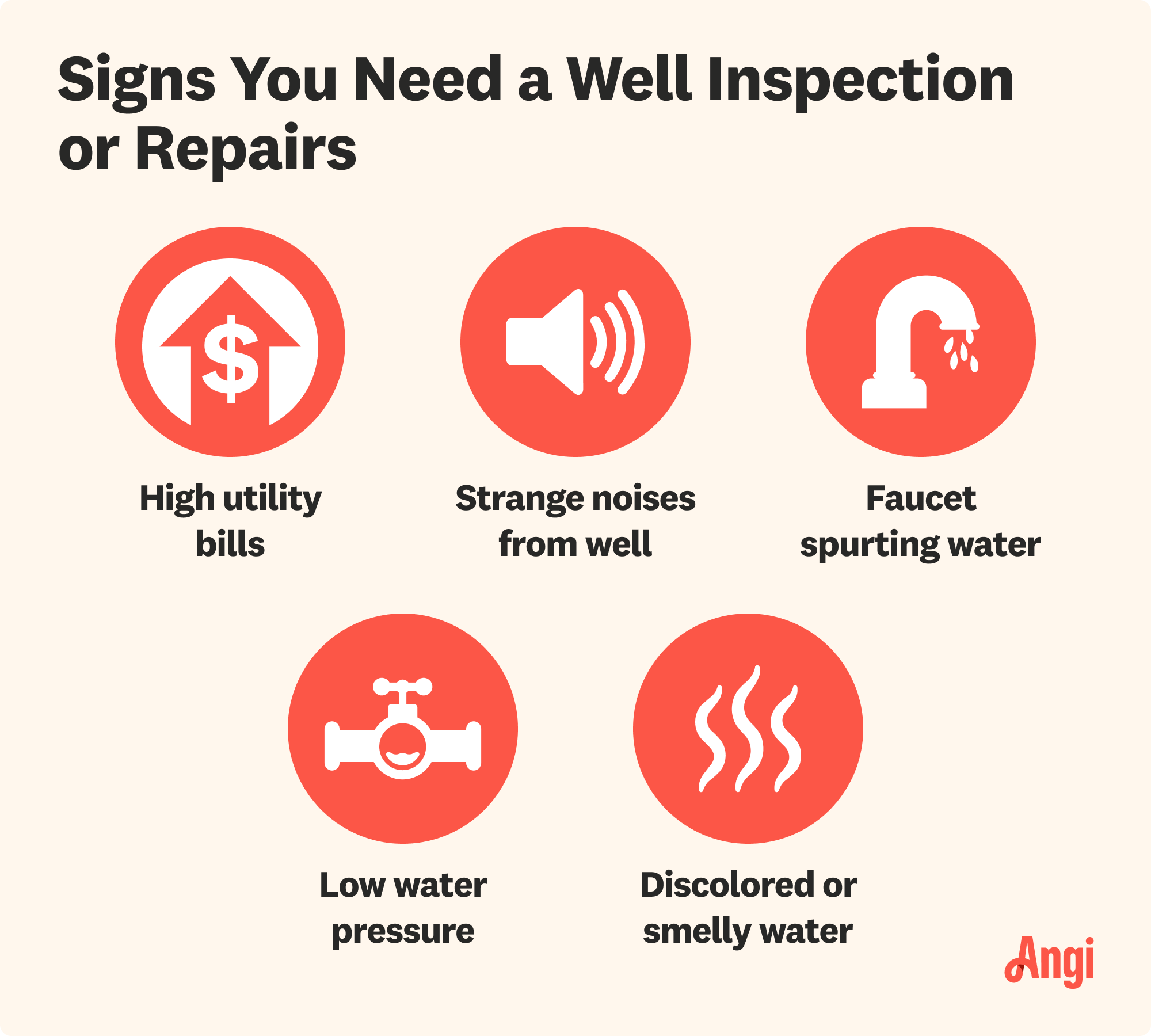
Drilling a well is no small feat. You’ll need to plan for excavating, a pump, and more. This guide will help you estimate and manage your well drilling costs.
Don’t let dry taps dash your bubble bath dreams


A depleted aquifer can result in a dry well and no water.
Faulty pressure systems can lead to no water or low water pressure.
Leaks and loose or damaged parts can affect your well pressure system.
Washing without water isn’t really washing at all—your hair, clothes, and dishes would all agree! Having your own well can be a great way to access fresh water and save on your water bills all while enjoying minimal well maintenance. But when you have no water or low water pressure, it’s usually a warning sign that your well and water lines need attention. When these warning signs turn on, use our tips to ensure your water turns on, too.
When taking on this project, expect questions only a pro can answer. With our network of local pros, you'll get the job done and your questions answered—without the hassle and stress of doing it yourself.
A number of factors could be the culprit if your water pressure suddenly drops from a gush to a trickle, such as a stuck check valve, a failing well pump, or your well running dry. Ensure the pressure tank is set to the right level—normal ranges are set so that the pump turns on at 40 PSI and turns off at 70 PSI. If your pressure tank is set below 40 PSI, raising the pressure may solve the problem. If adjusting the PSI doesn’t fix the low water pressure, you may have a malfunctioning pressure system.
The well pressure switch is responsible for starting and stopping your pump at pre-set pressures. If there’s no water flowing to your faucets, a faulty pressure switch could be to blame. The malfunction can be related to worn down or loose parts, clogging, or electrical contact corrosion.

It’s normal for faucets to sometimes sputter when you first turn them on, but more frequent sputtering can be a sign that there is air in your well and plumbing system. Failing valves or pipe leaks can sometimes cause your faucets to pump air, which generally requires professional repairs or replacements.
In a worst-case scenario, sputtering faucets can be traced back to a drop in your well water table. When this happens, your well pump attempts to draw water but sucks in air instead.
Certain activities that require lots of water, such as several loads of laundry or running your lawn sprinklers, can deplete your well water level. Your well should recover from heavy use within a few hours, but slower recovery can suggest that your aquifer is low. In most cases, this is either due to higher demand than the aquifer can handle or insufficient precipitation to restore it.
Water is a limited resource, and sometimes a lack of water to your faucets is due to a lack of water in from your aquifer supply. Droughts, water overuse, shallow well depth, and other circumstances can lead to a low water table, which can likewise cause your well to run dry.
If you still have water but notice a change in its quality, it can indicate several problems. One of the most common causes of discolored water or an off taste is damaged pipes, which can allow manganese, iron, and other minerals to seep in either from the surrounding rock or rusting pipes. Damaged pipes can also lead to contamination in your well water.
Dirty, sandy, or muddy water can also be a sign that your pump system’s filters are failing, which requires a professional to clean or replace them. It can also be indicative of a more serious issue—that your well’s groundwater is depleted.
Leaks in the pipes of your main water lines can throw off the water and air pressure. Besides reducing or stopping the flow of water to your home, leaking pipes can cause your pump to overwork. If your pipes are close enough to the surface, a serious leak will likely present as a wet spot in the ground.

Keep an eye on your electricity bill. If it suddenly spikes without any apparent reason, it could signal that your well pump isn’t functioning properly. Whether because of blockages, damaged valves, or pressure issues, your well pump has to work much harder to deliver water. Besides an increase in your electricity bill, an overworking well pump can lead to premature wear and tear.
Most wells use a pressure system to push water through pipes and to your faucets or other water hookups. If the pump’s pressure tank malfunctions, it can result in no water or low water pressure, prematurely wear out the pump, and a higher electric bill.
A variety of factors can cause your pressure tank to malfunction, such as a rupture in the pressure tank bladder or sediment and dirt clogging the tank’s valves that are responsible for directing water to your home. It may need to be professionally repaired, or you might need to budget for the cost of a new well pressure tank.
Strange noises are rarely a good thing in homes, and unusual noises from your well pump, such as clicking, rattling, and squeaking, suggest potential problems. For example, pressure control switch issues sometimes cause rapid clicking from turning on and off, and rattling can be a sign of impeller damage.
Even if your pump is still running, it could be responsible for a lack of water. Various issues can result in an impaired or broken well pump and be a sign that you need a new well pump, such as a clog from debris and dirt. Impellers, which are rotating discs that drive water from the well to the surface, can also wear out and break.

If troubleshooting suggests that your lack of well water supply is due to a low water table or water overuse, making efforts to conserve water can help restore consistent flow to your faucets. If no water is a persistent issue, consider increasing your well’s depth or upgrading your pump size to better match your water needs. Making efforts to repair minor plumbing leaks and other issues can also help conserve water and reduce strain on your well.
When it comes to broken components or malfunctioning pressure tanks or pressure switches, a local well pump repair professional is likely your best bet. Your well pump’s system involves complex mechanisms, and getting a trained eye to diagnose, repair, or replace parts can help keep your well in good working order.
From average costs to expert advice, get all the answers you need to get your job done.

Drilling a well is no small feat. You’ll need to plan for excavating, a pump, and more. This guide will help you estimate and manage your well drilling costs.

The cost of a well casing replacement depends on materials, well depth, and labor. This guide will help you find the right casing for your well and budget.

If you have a well, you might need to replace the well pump to have great-tasting water. Well pump replacement costs depend on your well size and other factors.

Tap into freshwater with a DIY well. Learn how to dig a well by hand with these steps, and enjoy cost savings and a natural water source.

Is your water pressure too low? Learn what pressure your well tank should be to get your system running smoothly and your showers and faucets back on track.

The right well pump will give you consistent water pressure and flow to your home. Learn about well pump types and how to choose what size well pump you need.